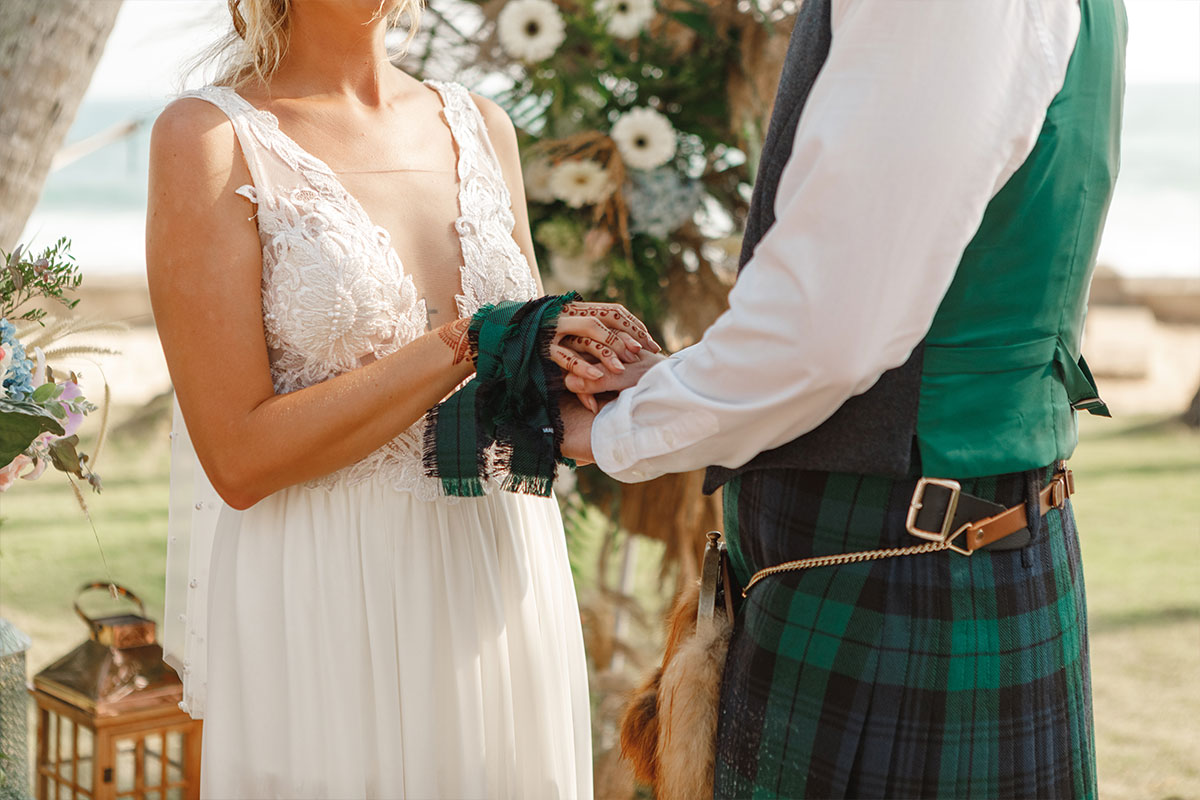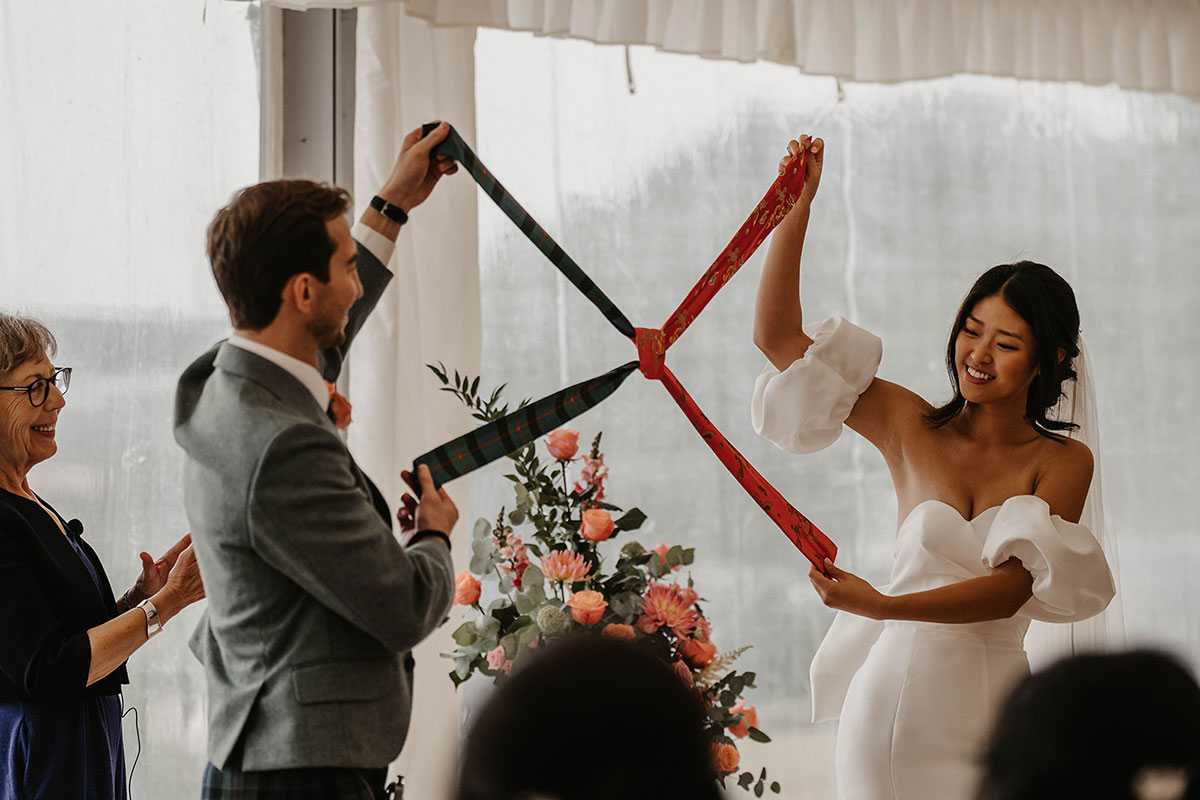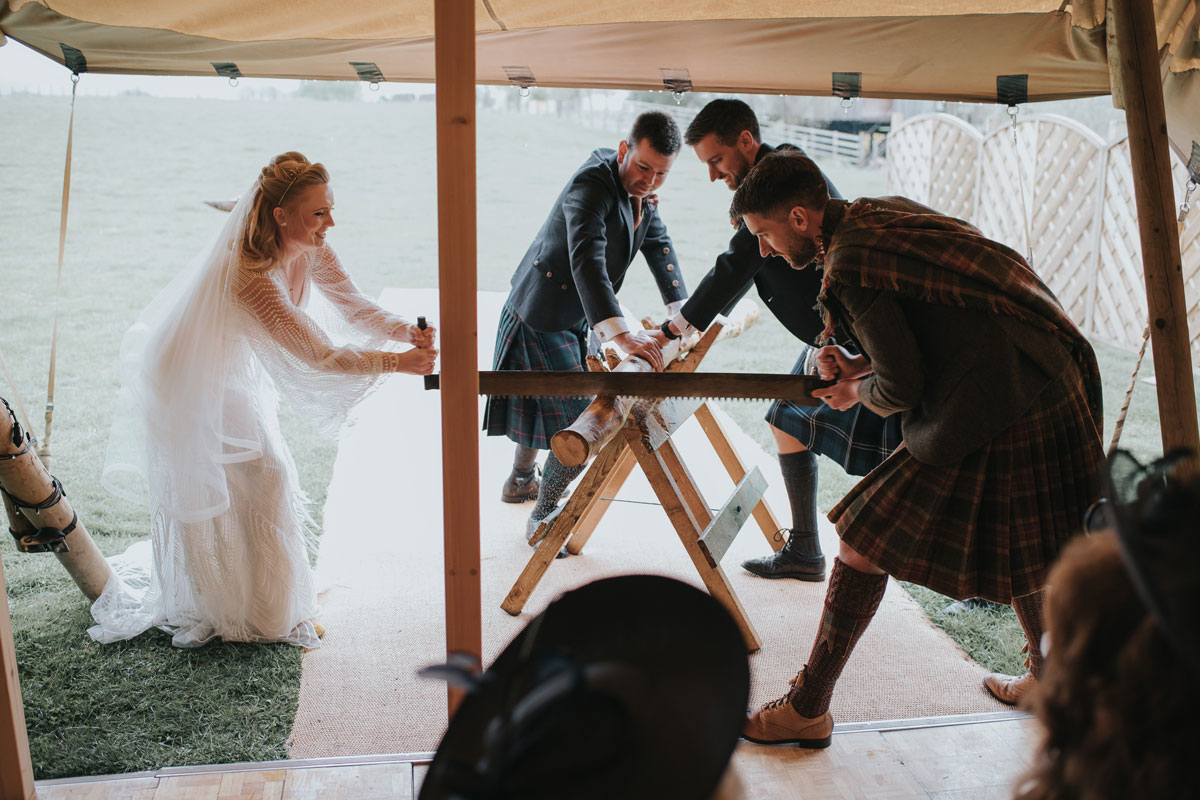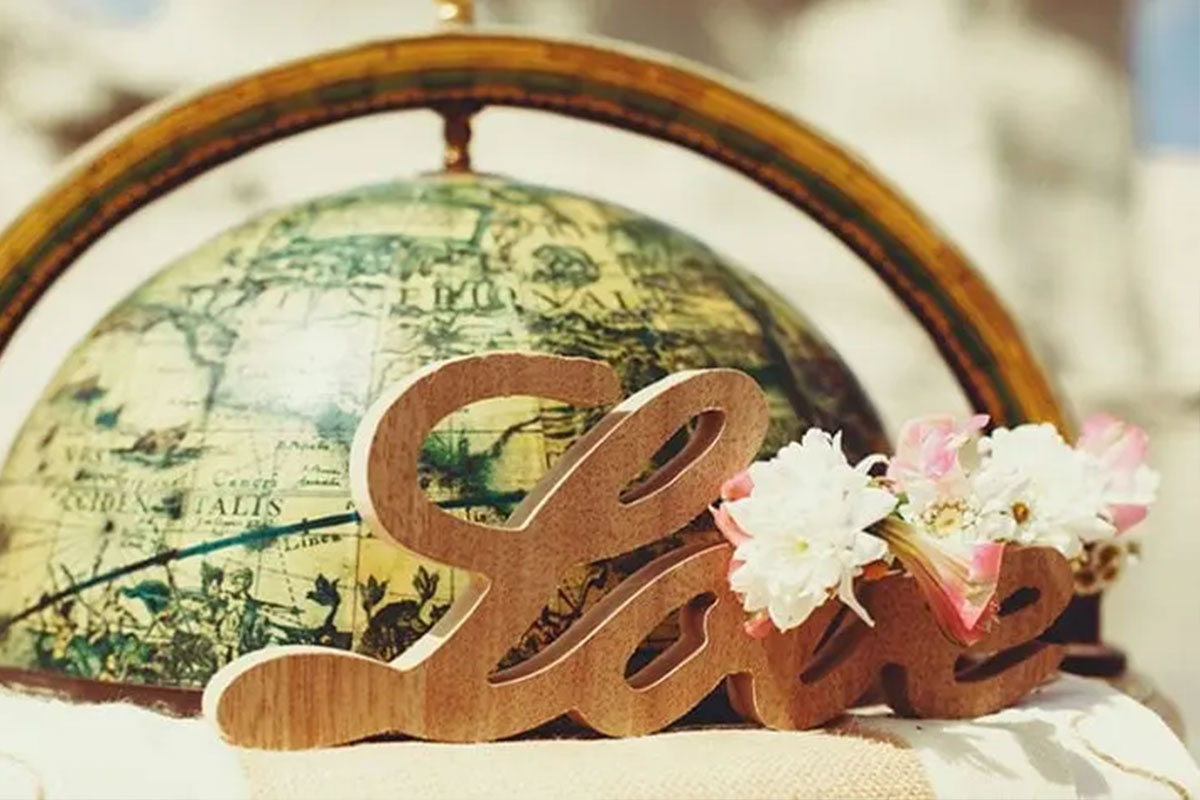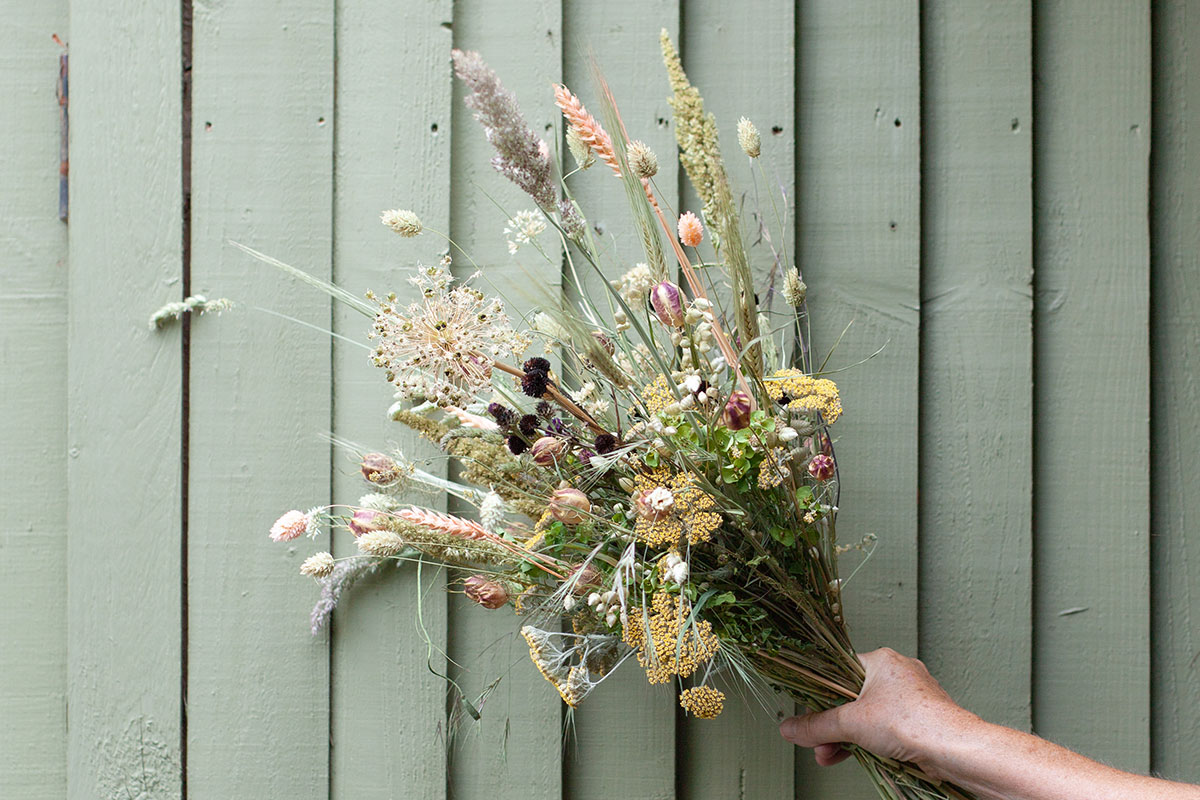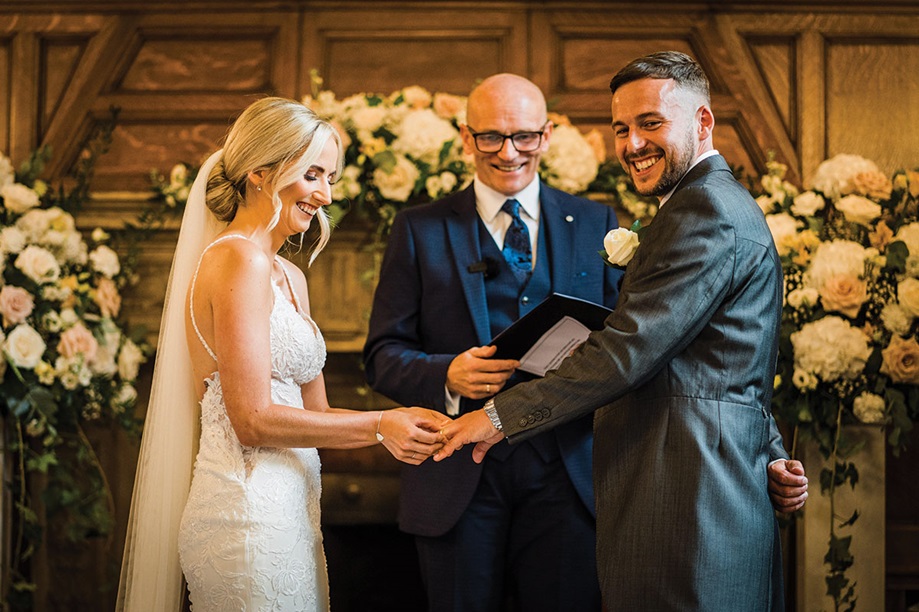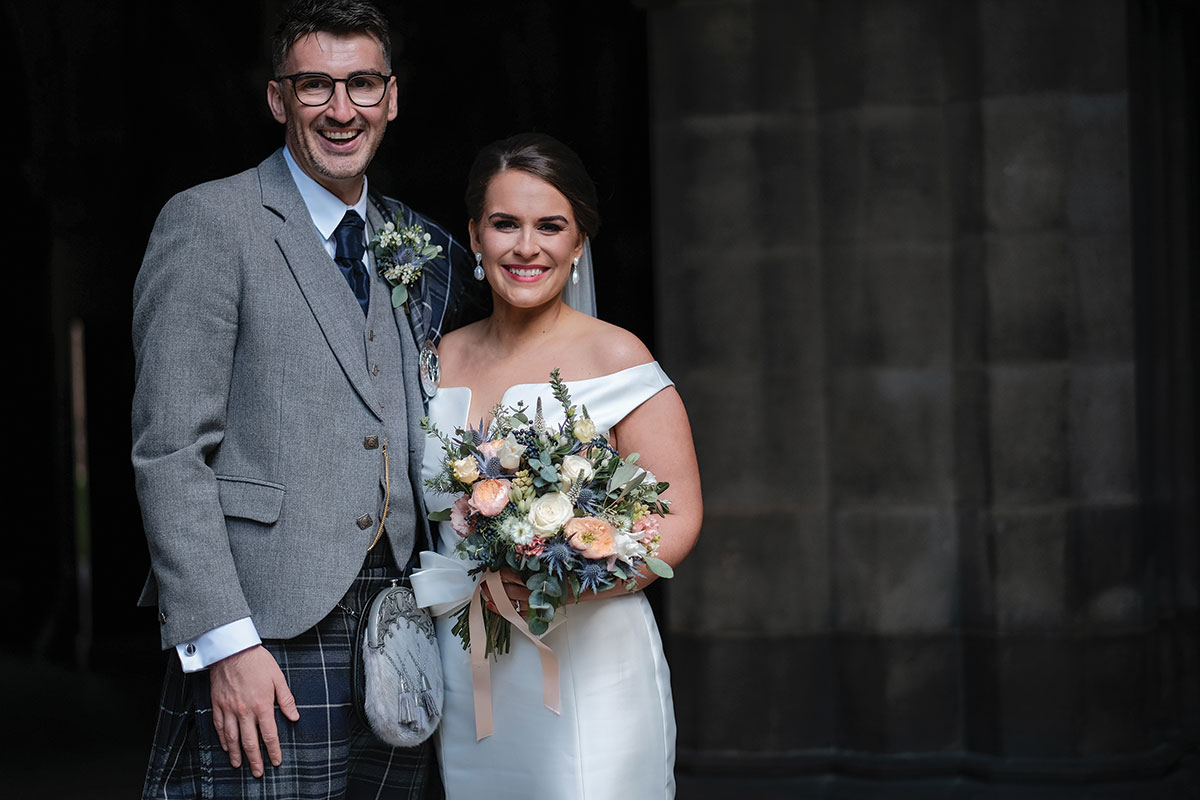We take a look at some fascinating and unusual customs you might find at Scottish weddings as well as celebrations abroad
Scottish wedding traditions
Looking to add a touch of Scottish tradition to your wedding day? From common rituals to unique historic touches, here are a few wedding traditions that hail from Scotland.
Drinking from the quaich
Drinking from quaichs has been popular in Scottish wedding ceremonies for centuries to symbolise the binding together of two people in love, friendship and trust. It sees the bride filling the two-handled silver bowl with whisky before passing it round the wedding party – let the celebrations begin!
Handfasting
The phrase ‘tying the knot’ actually comes from the ancient Scottish tradition of the couples trying two pieces of material together to symbolise their union. The material they use can be anything, but it is often a piece of cloth in their clan tartan or something that holds sentimental value.
During the ceremony, the couples’ hands are tied together, before they move their hands and pull the two pieces of material tightly into a knot. The tied material can be held onto as a keepsake, and some people choosing to have it framed.
Blackening the bride or groom
‘Blackening’ the bride or groom is a traditional Scottish ritual which still goes on today in some rural parts of the country. In the run up to the wedding, the groom and bride-to-be are captured by friends and covered in a mix of treacle, eggs, baked beans, flour and feathers, before being loudly paraded around town.
The custom stems from the practice of trying to ward off evil spirits, but it’s also believed that if they can withstand this kind of treatment, the couple can handle anything that comes their way in marriage.
Good luck charm
If you prefer something more subtle, a popular good luck charm in the Scottish borders is a sprig of white heather hidden in the bride’s bouquet – perfect for those who like to keep things simple!
Dancing the Lang Reel
The Lang Reel is a Scottish dance from coastal villages, where the wedding party begin dancing from the harbour and continue through the streets, with each couple leaving the reel when they pass their home. This continues until the only couple left are the bride and groom, who have the last dance. It all sounds a bit exhausting to us, however the tradition is still very much alive in some north-east fishing villages!
Bagpipes
Quite often at Scottish weddings a piper will make an appearance. The bagpipes might be played as guests are welcomed into the venue, as the bride makes her entrance, or to see the newlyweds out.
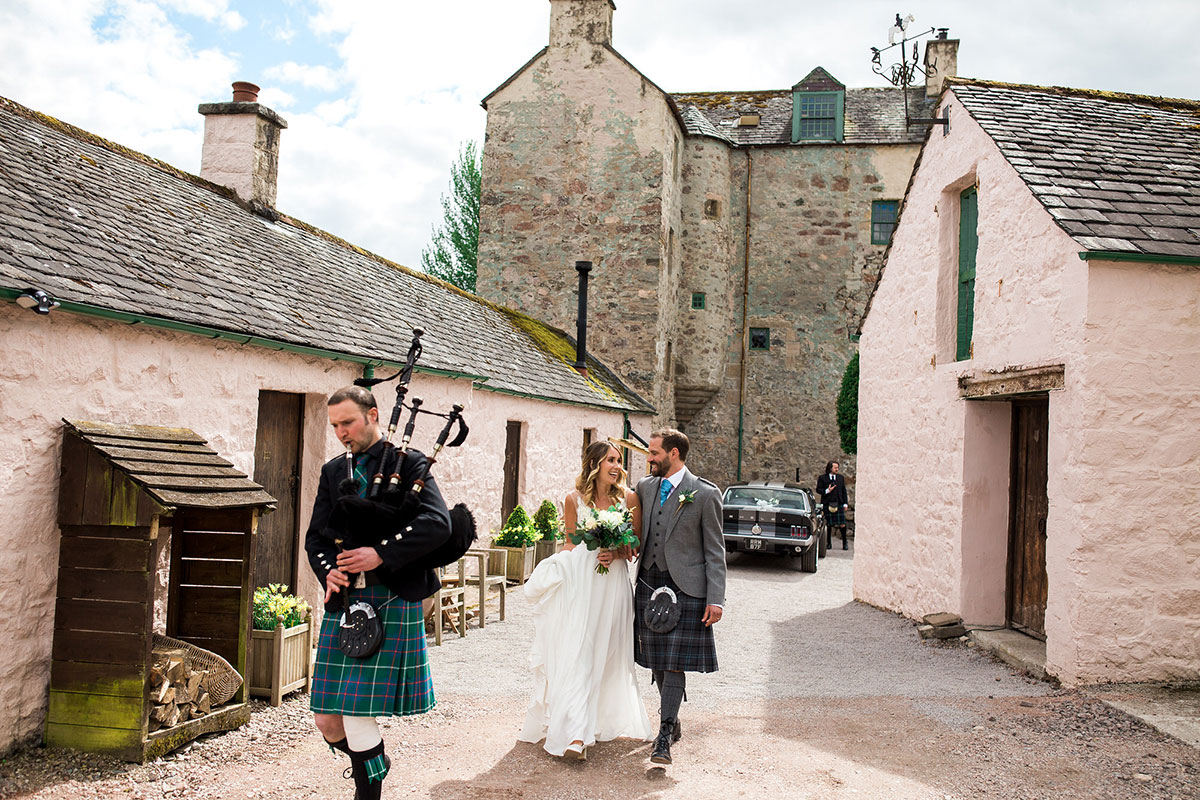
(Photo: Hemera Visuals)
A wedding scramble
Traditionally done before the ceremony and often by the father of the bride, a scramble involves throwing a small amount of coins. Children at the wedding then eagerly scramble to pick up as much of the change as they can.
A silver sixpence in the bride’s shoe
Although sixpence aren’t in circulation anymore, you can buy one to complete this tradition. It actually comes from a forgotten line after ‘something borrowed, something blue, something old, something new’ which should end with ‘and a silver sixpence in her shoe’.
The coin is traditionally placed in the bride’s shoe by her father to wish her prosperity.
A ceilidh
As far as dancing goes, it’s common across Scotland for people to have a ceilidh at their wedding. It’s a great way to get everyone up dancing and there are lots of ceilidh bands available to hire who will give you a refresher on all of the dances in case you can’t quite remember the steps!
Ending the night by singing ‘Loch Lomond’
Although this is a newer tradition, often the last song played at a wedding will be ‘Loch Lomond’ by Runrig. It’s sure to get everyone singing and jumping along – the perfect high to end the night on!
Wedding traditions from around the world
There are many wedding traditions from around the world that you might never have heard of. Would you incorporate any of these into your wedding day?
Log sawing
In Germany, the bride and groom demonstrate their strength as newlyweds in a rather different way. After the ceremony, the happy couple work together to saw a log in half. This represents the first obstacle you face in your marriage and symbolises how by working together you can accomplish anything.
Releasing doves
If you fancy a bit more romance on your big day, a Filipino tradition might be the way to go. After they have said their ‘I dos’, the bride and groom release a pair of white doves – one male and one female – to represent a harmonious life together.
Unity bowl
In Australia, the focus is on the couple’s friends and family. Guests are given stones or marbles to hold throughout the ceremony, before being placed in a ‘unity bowl’ at the end of proceedings. The couple take home the unity bowl as a reminder of their friends’ and families’ support.
‘Kidnapping’ the bride
In Romania they like to shake things up by ‘kidnapping’ the bride from the reception! Guests whisk her away to an undisclosed location while they negotiate a ransom. Typical requests? Usually alcohol! Once the deal is struck, the kidnappers return the bride to the reception in exchange for their payment.
Dance traditions
During a traditional Irish wedding, the bride has to keep at least one foot on the ground at all times while dancing. If not, legend has it that fairies will swoop in and carry her away!
Across in Greece, the bride and groom have to dance for their wedding gifts. Known as the ‘Money Dance’, the newlyweds take to the floor while their friends and family come up and pin notes to their clothes, draping them both in money or even adorning them with cash crowns – we certainly wouldn’t mind adopting this generous tradition!
Steeped in heritage and with strong geographical ties, these customs prove there are many ways to celebrate your wedding. Make sure your big day reflects your personality and beliefs by incorporating rituals that mean something to you.
When it comes to love and weddings, there are no boundaries!

